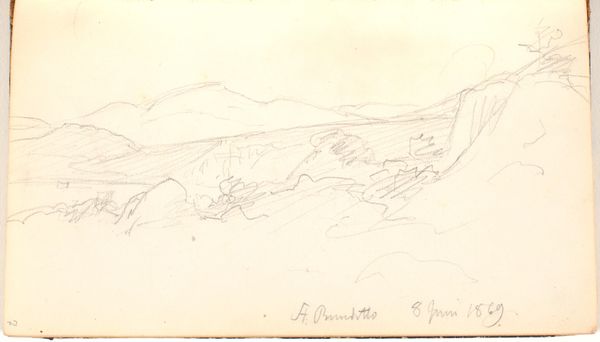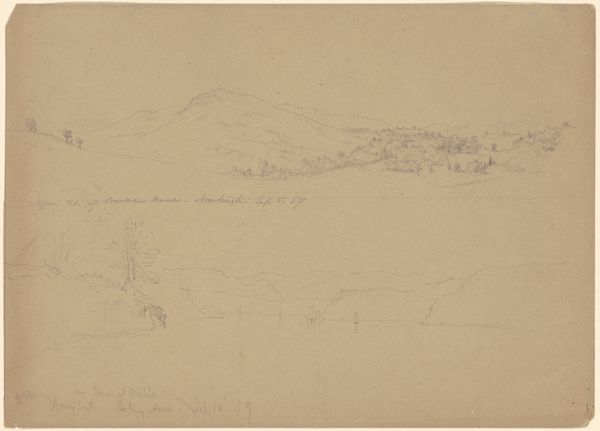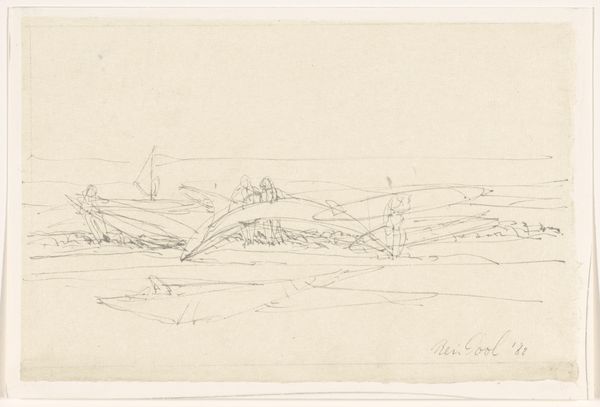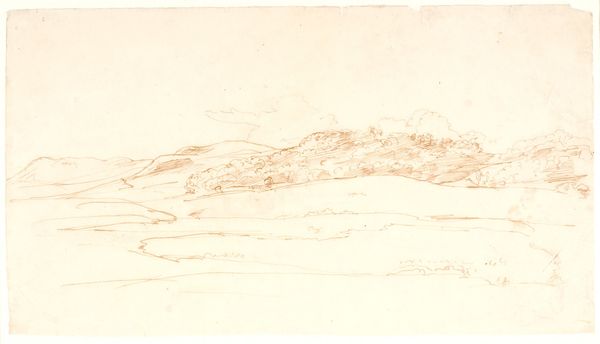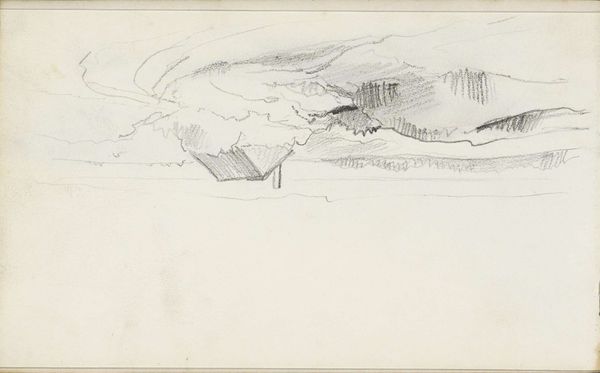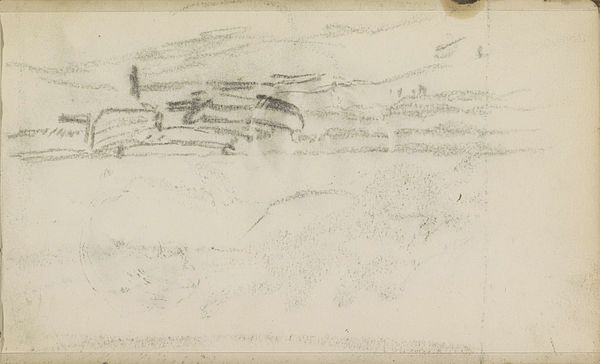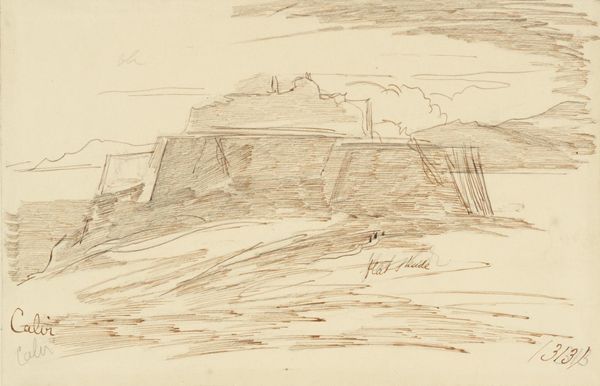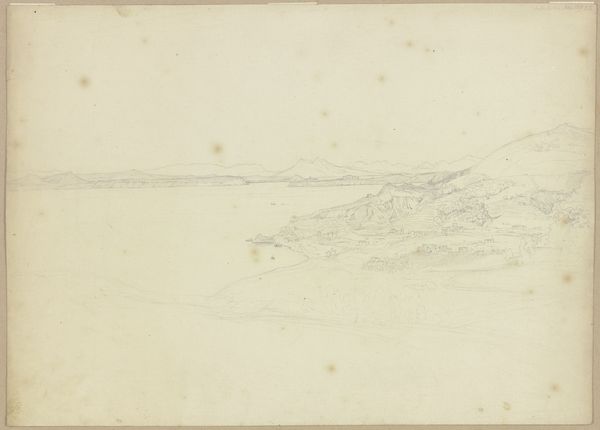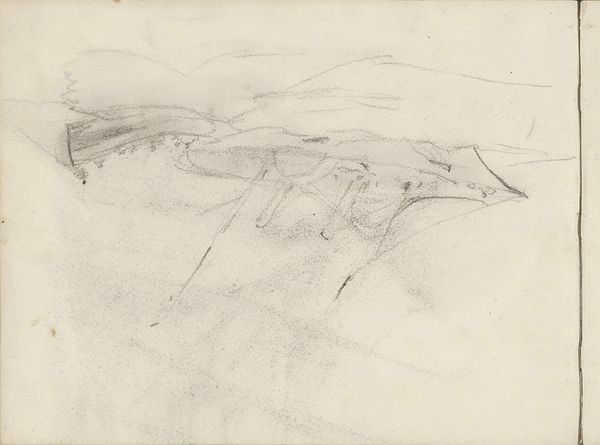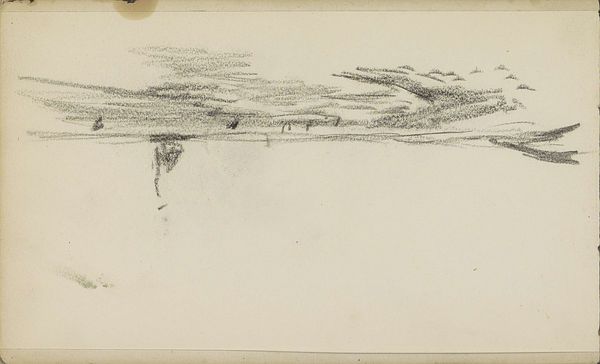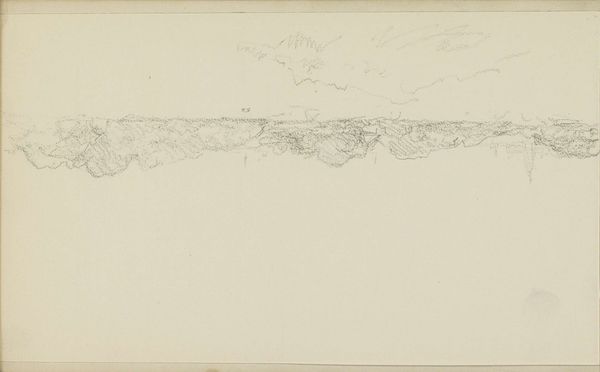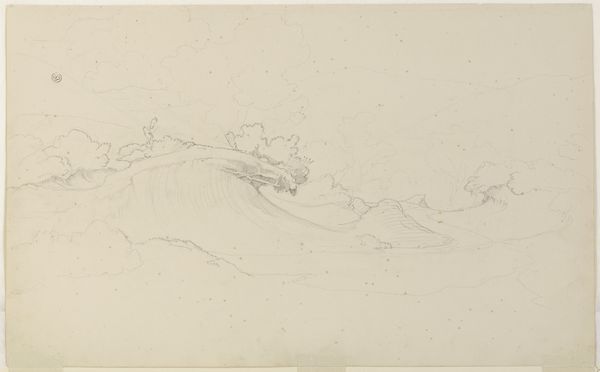
Dimensions: 200 mm (height) x 269 mm (width) (bladmaal)
Curator: Welcome to the gallery. Before us is P.C. Skovgaard’s pencil drawing, "Klinter ved Vejby," created in 1854. Skovgaard, a prominent figure in Danish Golden Age painting, captured the cliffs near Vejby with remarkable subtlety. Editor: Immediately, I’m struck by its understated power. There's a quiet solemnity in these cliffs, rendered with such delicate lines. The pale tones and vast expanse of sky lend the scene a certain melancholy. Curator: Absolutely. Skovgaard was deeply invested in depicting the Danish landscape authentically. While many of his contemporaries were drawn to grand, idealized visions of nature, Skovgaard sought to represent the land as it was experienced by the people, anchoring Danish identity in a tangible environment. This work exemplifies Romanticism, filtered through the lens of realism. Editor: I see that tension. Romanticism often idealized nature as sublime, a source of overwhelming emotion, but here the sublime is muted. There's a stillness, almost a reverence, that avoids grandiosity. And while it looks rather simple, its technique highlights the socio-economic realities of accessing and owning art supplies in mid-19th-century Denmark, challenging notions of fine art that were only available to specific populations. Curator: That’s a perceptive point. The choice of pencil as a medium might seem modest, yet it underscores Skovgaard's commitment to accessibility and direct observation. Moreover, prints of landscapes such as this helped foster and cement a specific, shared Danish cultural memory. Editor: It also emphasizes a certain vulnerability. These cliffs are impressive, but the soft pencil strokes convey their fragility, reminding us of the constant processes of erosion and change. It asks questions about environmental temporality, making me think about coastal communities vulnerable to environmental threats in a totally contemporary framework. Curator: A salient connection. By grounding Romanticism in the reality of the Danish landscape, Skovgaard invites us to consider our relationship with the environment—both its beauty and its fragility, offering us insights into nation building through a visual vocabulary. Editor: Yes, a perspective so important now, as we are reassessing not only the meaning of national identity, but our ethical responsibilities to environmental justice. It highlights art's social agency within different layers of complex discussions about the climate. Curator: Indeed. Thank you for joining me today for this discussion, the opportunity to look closely at the world we live in, the stories we tell about it, and the responsibilities we have toward it, has been invaluable. Editor: The drawing prompts many challenging questions about our perception and values, it has been thought-provoking, thanks for your curatorial comments.
Comments
No comments
Be the first to comment and join the conversation on the ultimate creative platform.
